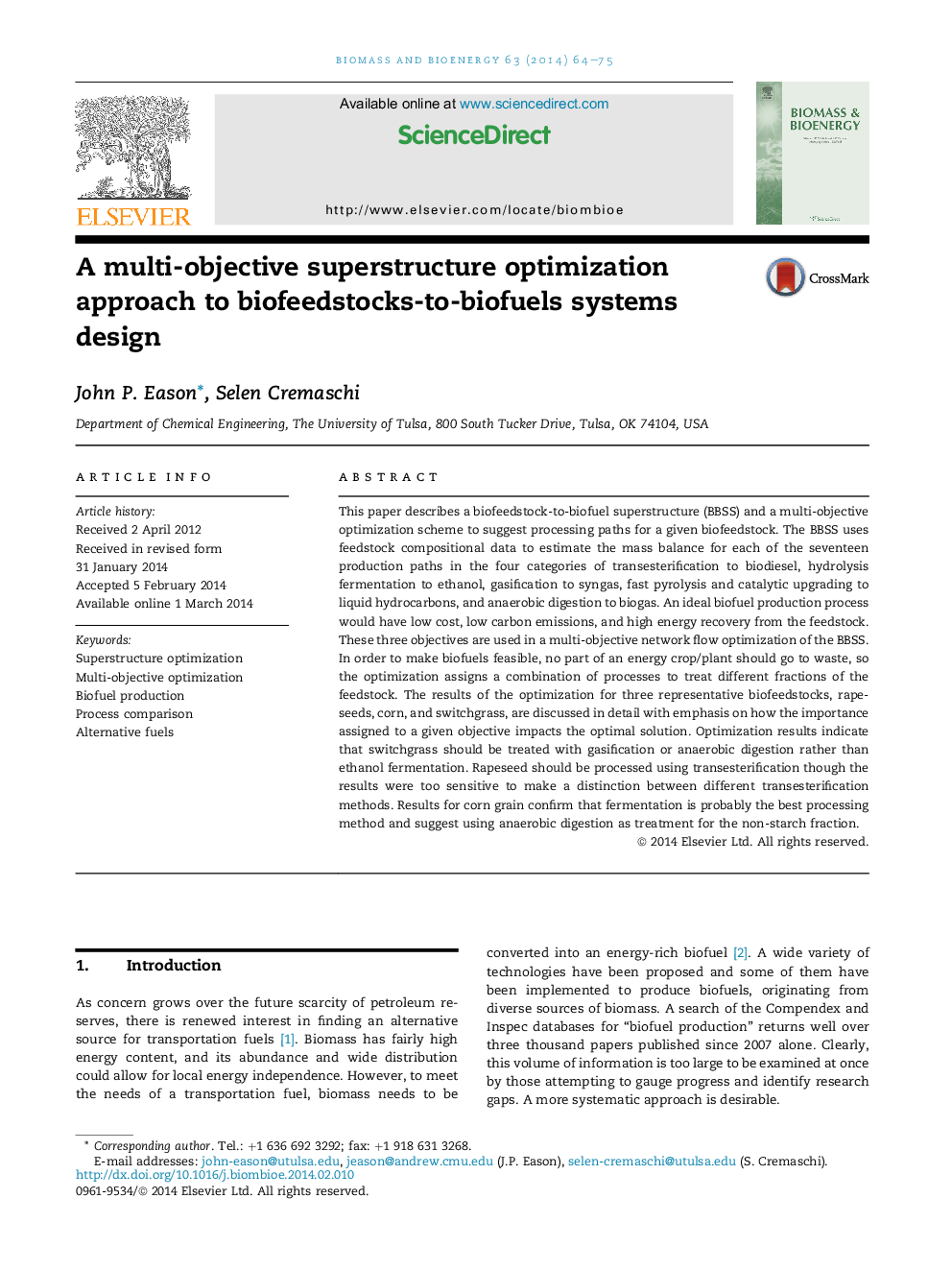| Article ID | Journal | Published Year | Pages | File Type |
|---|---|---|---|---|
| 676913 | Biomass and Bioenergy | 2014 | 12 Pages |
•We present a biofeedstock-to-biofuels conversion superstructure.•We implement a multi-objective network flow optimization on this superstructure.•Transesterification is favored for lipids and fermentation is favored for starch.•Gasification or anaerobic digestion is favored for lignocellulose.
This paper describes a biofeedstock-to-biofuel superstructure (BBSS) and a multi-objective optimization scheme to suggest processing paths for a given biofeedstock. The BBSS uses feedstock compositional data to estimate the mass balance for each of the seventeen production paths in the four categories of transesterification to biodiesel, hydrolysis fermentation to ethanol, gasification to syngas, fast pyrolysis and catalytic upgrading to liquid hydrocarbons, and anaerobic digestion to biogas. An ideal biofuel production process would have low cost, low carbon emissions, and high energy recovery from the feedstock. These three objectives are used in a multi-objective network flow optimization of the BBSS. In order to make biofuels feasible, no part of an energy crop/plant should go to waste, so the optimization assigns a combination of processes to treat different fractions of the feedstock. The results of the optimization for three representative biofeedstocks, rapeseeds, corn, and switchgrass, are discussed in detail with emphasis on how the importance assigned to a given objective impacts the optimal solution. Optimization results indicate that switchgrass should be treated with gasification or anaerobic digestion rather than ethanol fermentation. Rapeseed should be processed using transesterification though the results were too sensitive to make a distinction between different transesterification methods. Results for corn grain confirm that fermentation is probably the best processing method and suggest using anaerobic digestion as treatment for the non-starch fraction.
